Uncovering the Panagurishte Treasure
In 1949, the quiet Bulgarian town of Panagurishte became the center of archaeological excitement. Workers stumbled upon a collection of ancient artifacts that would come to be known as the Panagurishte treasure. This remarkable find, dating back to the 4th century BC, offered a window into the sophisticated artistry and cultural exchange between the Thracian and Hellenic worlds.
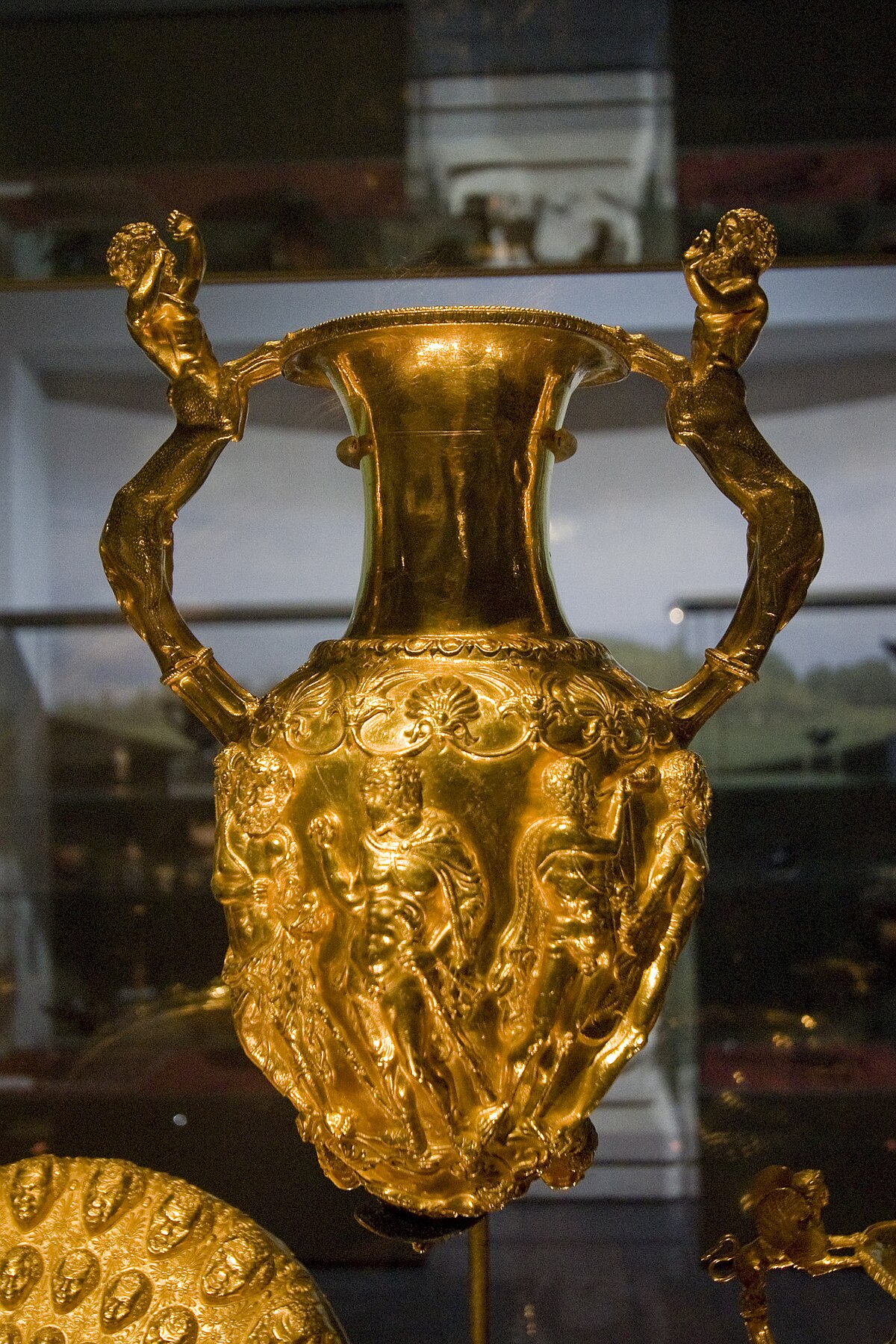
The Panagurishte treasure, which is now housed in the National Historical Museum in Sofia, Bulgaria, consists of 13 intricately decorated gold vessels, including phiales (shallow bowls), rhytons (drinking horns), and the impressive Centaur Amphora-Rhyton. The sheer scale and craftsmanship of these pieces have captivated historians, archaeologists, and art enthusiasts alike, providing invaluable insights into the artistic achievements of the ancient Thracian civilization.
Introducing the Centaur Amphora-Rhyton
Among the treasure’s many fascinating pieces, one stood out as a true masterpiece – the Centaur Amphora-Rhyton. Weighing an impressive 1.7 kilograms, this vessel is the largest part of the Panagurishte treasury and a testament to the extraordinary skill of its creators.
The Centaur Amphora-Rhyton is a unique and captivating object that combines two distinct vessel types – the amphora, a type of ancient Greek storage jar, and the rhyton, a funnel-shaped drinking horn. This fusion of forms creates a visually striking and functionally intriguing piece that exemplifies the cultural exchange and artistic innovation of the Thracian-Hellenic world.
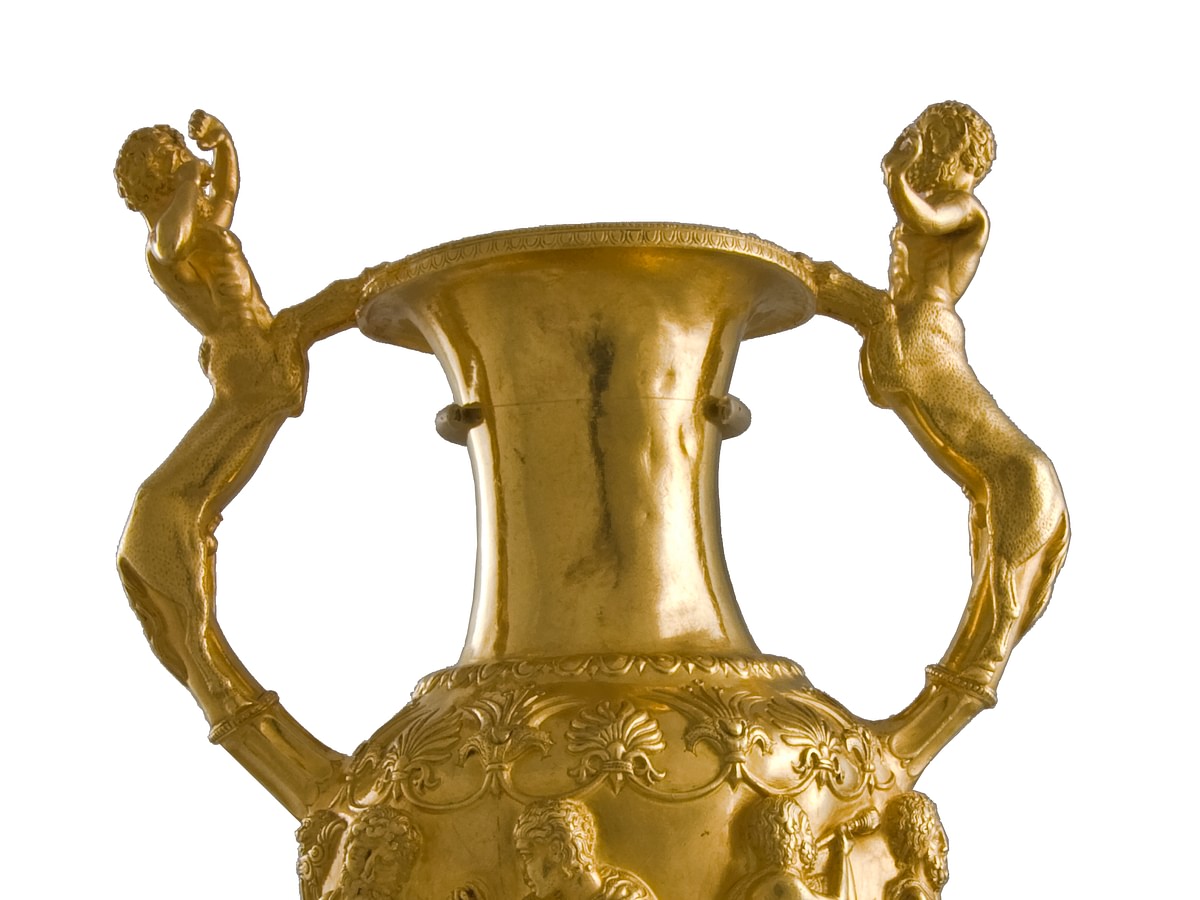
Thracian Influence and Hellenic Inspiration
The Centaur Amphora-Rhyton is a remarkable example of the blending of Thracian and Hellenic artistic traditions. The vessel’s overall shape and structure reflect the Thracian preference for intricate, naturalistic designs, while the mythological figures and decorative elements draw inspiration from the Hellenic world.
The body of the vessel is shaped like a traditional amphora, with a narrow neck and two handles. However, instead of the typical amphora form, the Centaur Amphora-Rhyton features a more organic, sculptural shape that resembles a mythical creature. The vessel’s base is in the form of a centaur, a half-human, half-horse figure that was a popular motif in Hellenic mythology and art.
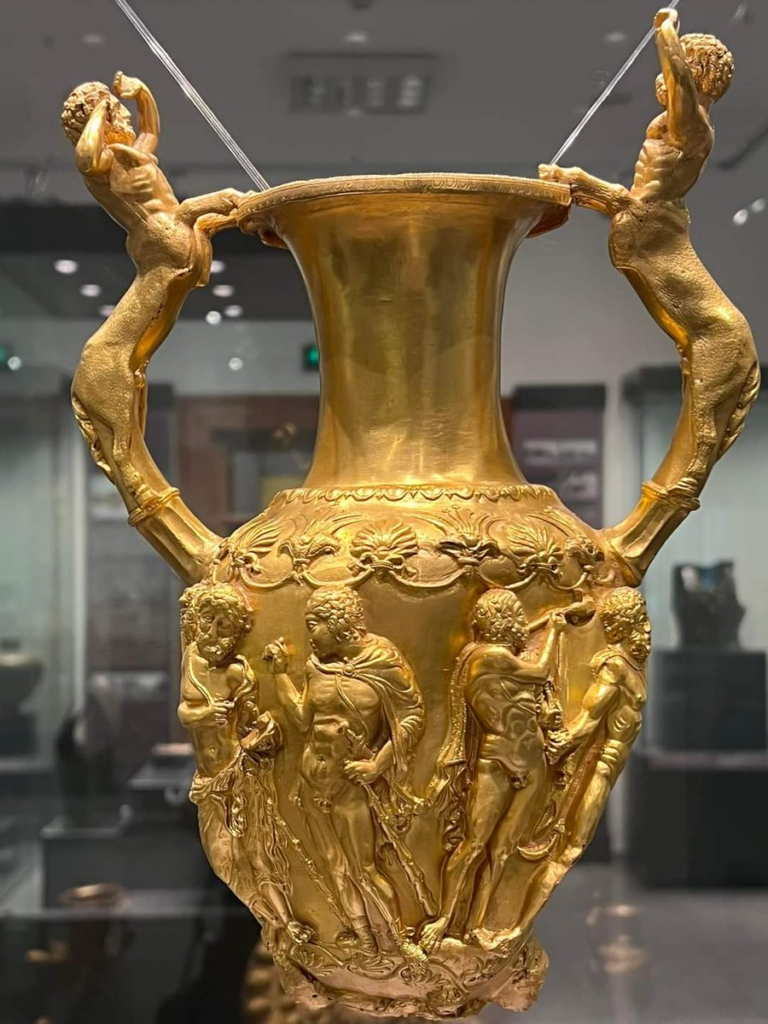
The centaur’s body is depicted in exquisite detail, with intricate patterns and textures that capture the creature’s muscular physique and equine features. The centaur’s head is turned to the side, and its arms are raised, creating a dynamic and expressive pose that adds to the vessel’s sense of movement and vitality.
Surrounding the centaur base are a series of relief-carved figures and decorative elements that further showcase the blending of Thracian and Hellenic styles. These include mythological creatures such as griffins and sirens, as well as more naturalistic depictions of animals and floral motifs.
The use of gold, the preferred material for Thracian artisans, also speaks to the cultural significance and high status of the Centaur Amphora-Rhyton. The vessel’s surface is covered in a stunning array of relief-carved and repoussé (hammered) decorations, all executed with a remarkable level of skill and attention to detail.
Symbolism and Significance
The Centaur Amphora-Rhyton was not just a visually stunning object, but one imbued with deep symbolic meaning and cultural significance. The choice of the centaur as the central motif is particularly intriguing, as this mythical creature was a powerful symbol in both Thracian and Hellenic belief systems.
In Thracian mythology, the centaur was often associated with the god Dionysus, the patron of wine, revelry, and the arts. The centaur’s dual nature, combining the human and the animal, was seen as a representation of the duality of human experience – the civilized and the wild, the rational and the emotional.
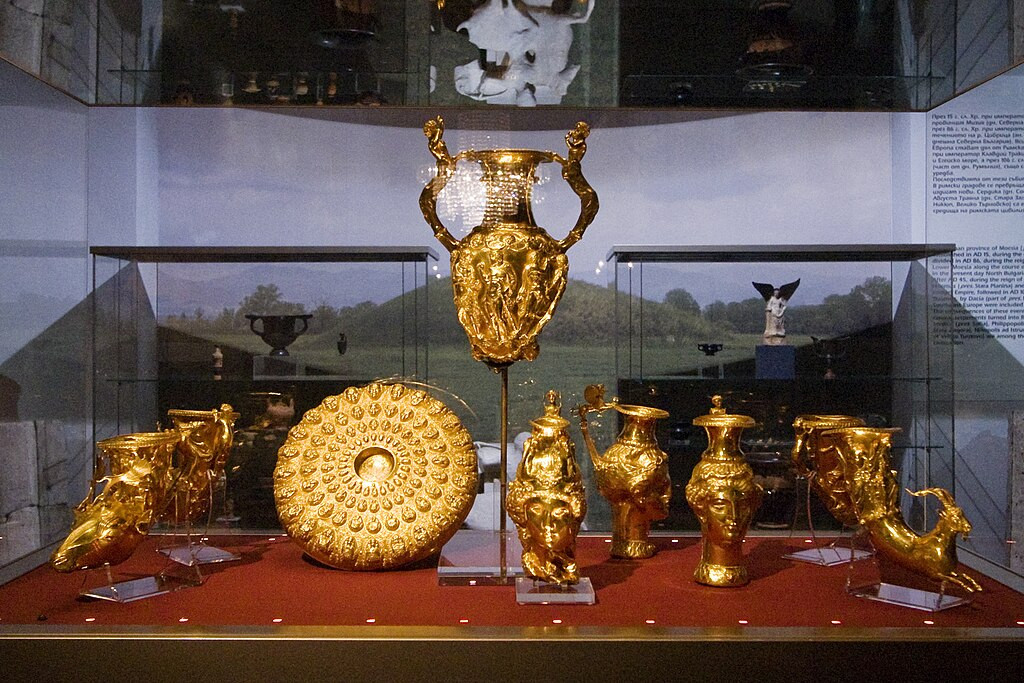
The Centaur Amphora-Rhyton’s function as both an amphora and a rhyton also carries symbolic weight. Amphorae were commonly used to store and transport liquids, particularly wine, while rhytons were ceremonial drinking vessels often used in religious rituals and elite banquets.
By combining these two vessel types, the Centaur Amphora-Rhyton may have served as a symbolic link between the earthly and the divine, the material and the spiritual. The vessel’s ability to both store and dispense liquid could be seen as a metaphor for the cyclical nature of life, death, and rebirth – a theme that was central to many ancient belief systems.
Moreover, the Centaur Amphora-Rhyton’s impressive size and exquisite craftsmanship suggest that it was not simply a utilitarian object, but rather a highly prestigious and ceremonial piece. It was likely commissioned by a wealthy Thracian ruler or elite, and may have been used in important religious ceremonies or as a symbol of political power and cultural identity.
The Artistry and Craftsmanship
The Centaur Amphora-Rhyton is a true masterpiece of ancient art, showcasing the extraordinary skill and technical virtuosity of its Thracian creators. The vessel’s intricate design, flawless execution, and attention to detail are a testament to the advanced metalworking techniques and artistic sensibilities of the Thracian civilization.
The process of creating the Centaur Amphora-Rhyton was undoubtedly a complex and labor-intensive undertaking. The vessel’s body was likely cast in a mold, with the centaur figure and other decorative elements added through the repoussé technique, which involves hammering the gold from the reverse side to create raised designs.
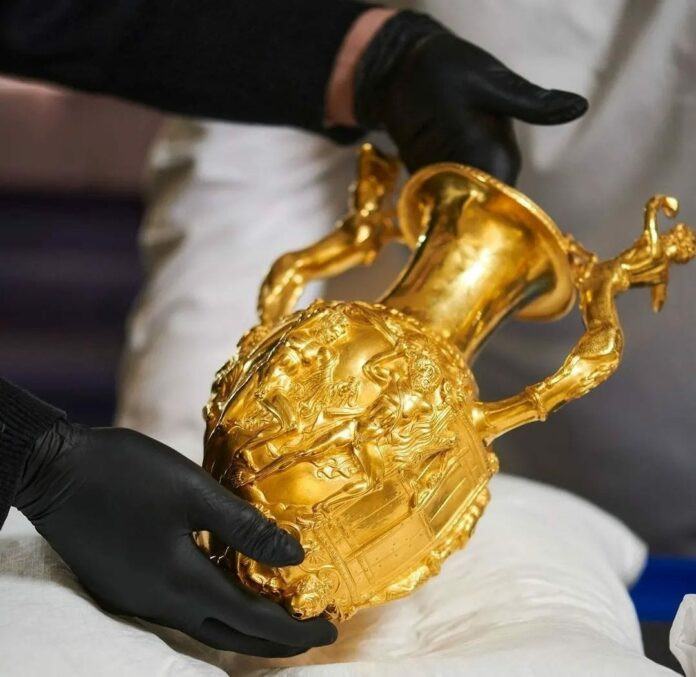
The level of detail and precision evident in the vessel’s decoration is truly remarkable. The centaur’s facial features, musculature, and equine characteristics are rendered with a level of naturalism and expressiveness that is truly breathtaking. The intricate patterns and motifs that adorn the vessel’s surface, from the mythological creatures to the delicate floral designs, are executed with a deft hand and a keen eye for balance and harmony.
The Centaur Amphora-Rhyton’s technical mastery is further evidenced by its impressive size and weight. Crafting a vessel of this scale and complexity, entirely out of gold, is a feat that speaks to the advanced metalworking skills and specialized knowledge of the Thracian artisans who created it.
A Legacy of Cultural Exchange
The Centaur Amphora-Rhyton is not just a stunning work of art, but a testament to the rich cultural exchange and artistic collaboration that flourished between the Thracian and Hellenic worlds during the 4th century BC. This remarkable vessel represents the culmination of a long-standing tradition of artistic and cultural cross-pollination between these two ancient civilizations.
The Thracians, known for their skilled metalworking and love of naturalistic designs, drew inspiration from the mythological imagery and decorative motifs of the Hellenic world, while the Hellenes, in turn, were influenced by the Thracians’ mastery of precious metals and their unique artistic sensibilities.
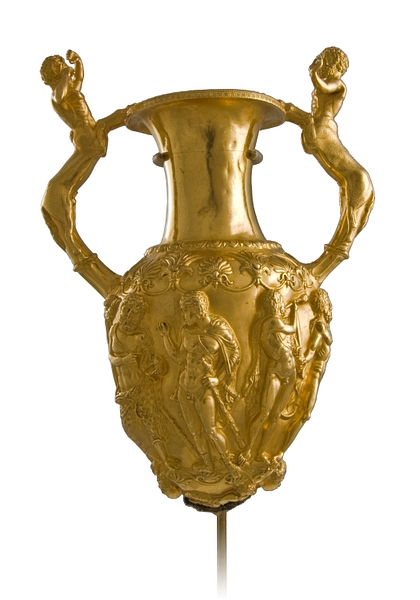
This cultural exchange was facilitated by the extensive trade networks and political alliances that connected the Thracian kingdoms to the Hellenic city-states. As goods, ideas, and artisans moved across these networks, the artistic traditions of the two civilizations intermingled, leading to the creation of works like the Centaur Amphora-Rhyton – a true synthesis of Thracian and Hellenic styles.
Today, the Centaur Amphora-Rhyton stands as a powerful symbol of this cultural exchange, a testament to the remarkable creativity and ingenuity that can arise when diverse artistic traditions come together. It serves as a reminder of the enduring legacy of the Thracian civilization, and the vital role it played in shaping the cultural landscape of the ancient world.
Conclusion
The Centaur Amphora-Rhyton is a truly captivating and awe-inspiring work of art, a masterpiece that continues to captivate and inspire people across the world. Its intricate design, exquisite craftsmanship, and deep symbolic significance make it a testament to the extraordinary artistic achievements of the ancient Thracian civilization.
As we delve into the history and significance of this remarkable vessel, we gain a deeper appreciation for the rich cultural exchange and artistic collaboration that flourished between the Thracian and Hellenic worlds. The Centaur Amphora-Rhyton stands as a timeless symbol of the power of cross-cultural dialogue and the enduring legacy of the ancient world.
Whether you’re an art enthusiast, a history buff, or simply someone who marvels at the ingenuity of the human spirit, the Centaur Amphora-Rhyton is a must-see treasure that offers a window into the past and a glimpse of the boundless creativity that has shaped our shared cultural heritage.

